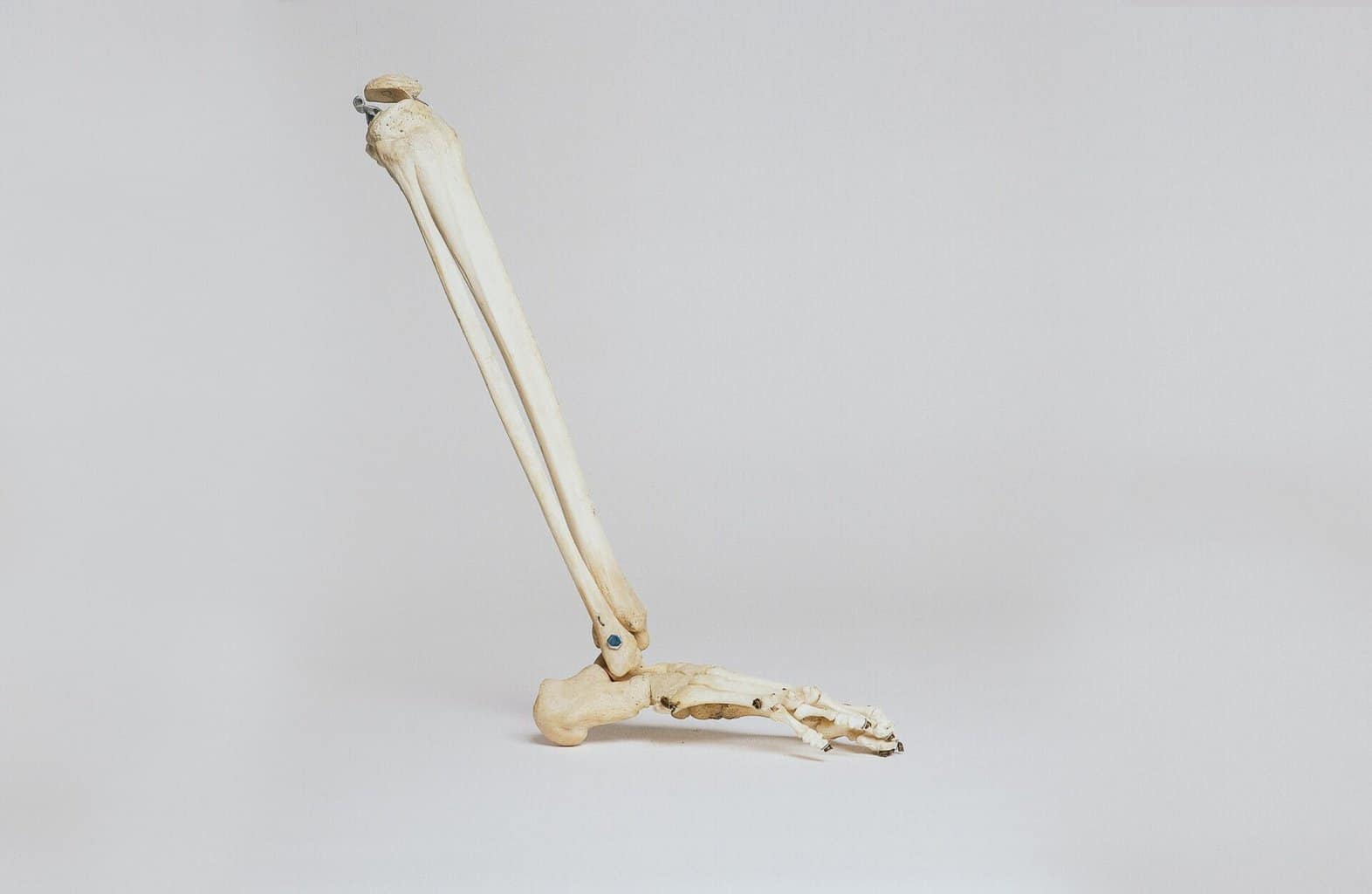Plantar fasciitis surgery is one of many treatments prescribed by doctors that often don’t offer true, long-term healing because they don’t address the root cause of the issue. Another roadblock that people often come across when trying to get rid of their foot pain is misdiagnoses. Here, we’ll address common mistakes when diagnosing and treating plantar fasciitis so you can have the information you need to take your health and healing into your own hands.
For a quick overview of what plantar fasciitis is, check out our blog, “What Is Plantar Fasciitis.”
What is Causing My Foot Pain?
Nerve Entrapment
The other thing to consider is that there are other things that can seem like plantar fasciitis. The easiest example here is that it can be a nerve entrapment in the plantar fascia in the bottom of your foot. One of the nerves in your foot is the calcaneal nerve that can become entrapped, or stuck, in other tissues. And the nerve can feel a lot like plantar fasciitis.
How NOT To Treat Plantar Fasciitis
I had a client who’d had plantar fasciitis for eight months and had been in a boot for six. This is one of the more common treatments for plantar fasciitis that never really works out. Boots keep your foot from moving, which allows your plantar fascia to heal, but it also causes a lot of atrophy, or muscle loss.
Now, some muscles are forgetting how to fire properly and incorrect movement patterns emerge. Then these people end up with more issues than they started with. By the time that she got the boot removed, her plantar fascia had largely healed, but she still had very similar pain.
It turned out the pain, while not plantar fasciitis anymore, was caused by nerve entrapment in the arch of her foot where the plantar fascia had been inflamed. When the plantar fascia went through its healing process, it probably healed over the nerve. Now, it tugged on the nerve every time she took a step.
We released the entrapped nerve and she quickly returned to normal, pain-free walking. But then we had to go through all the strengthening cycles and processes to replace the poor movement patterns her body had learned while in the boot with proper body mechanics to protect the rest of the joints in her body, including the ankle, knee, hip, and even up through the back and to the shoulder.
Heel Spurs Versus Plantar Fasciitis
Heel spurs are another issue that often gets misdiagnosed as plantar fasciitis. Having heel spurs means that calcium deposits have accumulated on the heel bone, called the calcaneus. It’s theorized that the spur is tearing the plantar fascia.
The problem with this theory is that a lot of people have heel spurs and never develop plantar fasciitis. The only time that this could actually be a possibility is if that heel spur is pushing into the plantar fascia because the arch is collapsing.
When the arch collapses, it’s getting a double insult. First, it’s getting stretched, which is that over pronation that we talked about that’s constantly pulling at it. Secondly, that spur is being thrust into the plantar fascia.
If that’s the case, then yes, absolutely. I think the heel spur can be a contributing factor. However, a lot of people sell it as when they do an image and they see a heel spur. That must be the thing that’s causing their plantar fasciitis.
Then, that person goes through surgery to get the heel spur removed (a kind of plantar fasciitis surgery you could say), but ends up disappointed to find that the plantar fasciitis still comes back years or months later. Because, really, the root cause was never addressed. The collapsing arch that’s stretching the plantar fascia and pulling it across the bone spur is still collapsing and collapsing for a reason, often an issue happening somewhere else in the body that the surgery didn’t address at all.
Plantar Fasciitis Treatments to Avoid
Plantar fasciitis surgery is one of a few common treatments to avoid when trying to heal plantar fasciitis. The treatments that many doctors might prescribe are anywhere from non-steroidal anti-inflammatories like Advil, or Aleve, to orthotics or even injections and surgery.
Again, you might be prescribed a walking boot, cane, or crutches to take pressure off of the plantar fascia. But we’ve already talked about why those will only relieve the symptoms and reduce the inflammation. All of those mechanical things causing the plantar fascia will still exist, which will cause the degeneration to come right back later.
Another, more invasive recommendation is injecting a steroid medication into the area. However, you can’t do a whole lot of these because the nature of these injections is that they also weaken the plantar fascia. So over time, even though these medications rapidly reduce the inflammation, they also increase the likelihood that you will have this issue in the future.
Plantar Fasciitis Surgery
Plantar fasciitis surgery is very rarely done. It’s usually reserved for severe cases that have been unresponsive to other treatments. But often, these “unresponsive” cases have just been mismanaged with the previously listed “treatments.” When they haven’t been successful, for all of the reasons listed above, they resort to surgery.
In reality, the case was never treated appropriately in the first place. The root cause was never addressed. Plantar fasciitis surgery will be used to detach the plantar fascia from the heel bone, which will again just disable that serve to destabilize your foot, you’ll no longer have what’s called the Windlass mechanism, which is what I spoke about in our previous blog on what causes plantar fasciitis, when you pull the big toe back, the plantar fascia gets rigid to provide support for the arch.
What will happen instead is, since that’s not there, your foot will be more prone to collapsing, which will cause increased muscle and tendon issues and strain over time, and also cause a variety of force absorption issues which could cause further issues in your knee, in the meniscus areas, and the hip.
This is why plantar fasciitis surgery should be avoided at all costs. And the best way to avoid it is by making sure that you get it treated correctly to begin with.
Orthotics for Plantar Fasciitis
Orthotics is another thing that can be used as a temporary treatment method, meaning it’s something that you should use for now, but not forever as long as you still have a good arch.
If you used to have an arch and it has completely collapsed and you no longer have any sort of arch anymore even when you pick your foot up off the ground, that’s one scenario in which you might need permanent orthotics. However, if when you pick your foot up off the ground your arch goes from flat to actually existing and being an arch, then there might be something that could be done from a muscular or joint mobilization perspective to get your body to use that arch correctly again.
Orthotics can be a temporary solution to cause less pronation, but shouldn’t be used to stop all pronation. A little bit less pronation when you’re walking can allow that plantar fascia the time to heal, but should not be used over a longer period of time, or indefinitely. Because when you support the arch over a long period of time with orthotics indefinitely, the muscles will lose their ability to do their job altogether. Essentially, they’ll get lazy until they lose the ability to work at all. So over time, you’re still going to have even weaker arches, which is going to cause this issue to just come back again and again. And the idea is to make the issue go away, not just for now, but forever.
Healing Plantar Fasciitis For The Long Term
When it comes to finding a long-term solution for plantar fasciitis, it comes down to finding a doctor who can identify the root cause. Physical therapists trained in root-cause treatments are the best equipped to design a treatment plan specific to the issues in your body causing the extra tension in your foot.
Learn more about your plantar fasciitis at one of our complimentary consultations, or Discovery Sessions. The sessions are designed to give you the information you need to make a confident decision about your health and care. We’d love to help you discover the root cause of your pain and give you a roadmap to long-term healing.






